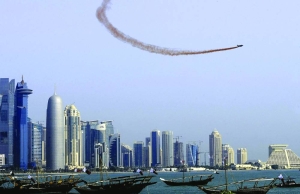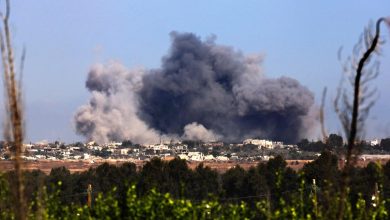Qatar to see spike in growth when LNG capacity expansion goes online: Standard Chartered


Qatar’s investment in recently upsized gas capacity expansion is likely to support private-sector activity, bank said in a research
Standard Chartered bank in its ‘Global Focus Economic Outlook Q2-2024’, which covers the outlook for some 58 economies, key geopolitical issues and financial market implications this year and beyond, forecasts a “calm before the upsized gas boom” in Qatar and predicts the post-FIFA slowdown to change pace next year.
Qatar now aims to increase output at the North Field by 85% versus 64% previously, which would take natural gas output to 126mn tonnes per year (mtpy) by end-2027 and 142mtpy by end-2030, from 77mtpy currently.
Qatar’s investment in the recently upsized gas capacity expansion is likely to support private-sector activity, the bank said.
The research notes Qatar’s private-sector credit growth was about 6% year-on-year (y-o-y) in January, exceeding GDP growth, which dipped to 1.0% y-o-y in Q2,2023 from 8.0% in Q4,2022.
The planned expansion of LNG output and subsequent boost to GDP is also expected to rein in public debt to around 30% by 2027, Standard Chartered noted.
Prior to that, the report estimates that public debt will decline to 37.5% of GDP by end-2024 and 35% by end-2025, from a peak of 73% in 2020 – assuming Qatar continues to use its surpluses to pay down external debt (external debt maturities are $4.8bn in 2024 and $2bn in 2025).
Notably, the composition of government debt has shifted with foreign and domestic debt now at almost equal shares, from a 60:40 split in favour of external debt in 2020, it said.
Meanwhile, the research shows Qatar’s net external asset position is improving.
Qatar’s fiscal breakeven oil price is the lowest among oil-exporting regional peers, standing at just $50/barrel. Comparatively, reserves stood at $67.6bn in January, rising $10bn since early 2022.
Moreover, non-resident deposits in the country have declined and now constitute less than 20% of total deposits – helping to address a historically important systemic vulnerability.
“We see the end-2024 policy rate (deposit rate) at 5.25%, in line with our latest Fed forecasts,” Standard Chartered said.
Overall, the Global Focus Economic Outlook Q2,2024 also indicates Asia is set to remain the primary engine of global growth, with Africa and MENAP expected to grow faster in 2024 than in 2023.
It expects global GDP growth of 3.1% this year, unchanged from 2023, and 3.2% in 2025, an improvement from earlier forecasts of 2.9% and 3.1%.
Muhannad Mukahall, chief executive officer and head of CCIB at Standard Chartered Bank – Qatar commented, “We expect to see positive growth in Qatar in the coming years as work on the substantial liquefied natural gas (LNG) capacity expansion project begins to pick up pace.
“The newly-announced expansion at North Field West adds a further 16mn tonnes of LNG per year to existing plans and will no doubt aid Doha on its quest to dominate the top spot for the world’s top LNG producers. Our research shows this will boost the private-sector, increase GDP and therefore massively stunt public debt.”







